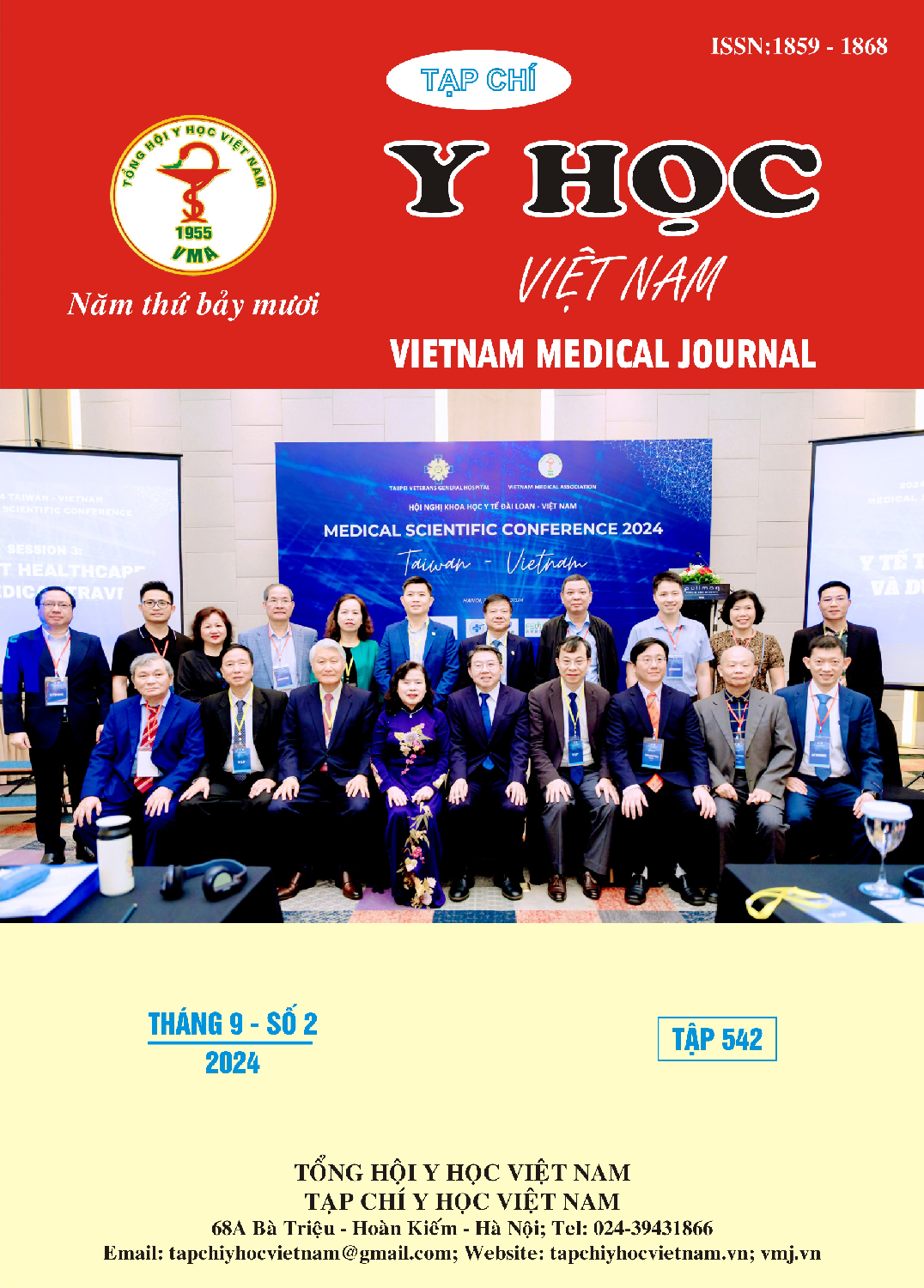THE IMPACTS OF SUPRA AGGER NASI CELLS ON FRONTAL SINUSITIS BY USING MULTIPLANAR CT SCAN AT MINH DUC HOSTITAL – BEN TRE
Main Article Content
Abstract
Background: The anatomical structure of the frontal sinus and frontal recess is relatively complex. The International Frontal Sinus Anatomy Classification (IFAC) was developed to provide clearer descriptions of the positions and relationships between the cells in the frontal recess. Understanding the relationship between the anatomical structures of the frontal sinus recess and frontal sinusitis is essential for effective intervention in this area. Objectives: This study aims to examine frontal recess cells according to IFAC 2016 and investigate the correlation between the structure of the supra agger nasi cells on frontal sinusitis. Materials and methods: This was a prospective, cross-sectional descriptive study on all CT scans of nasal cavities and paranasal sinuses of patients ≥ 20 years old at the Examination Department of Minh Duc Hospital - Ben Tre from April 2023 to February 2024. Results: 308 CT scans (600 sides) were examined. Agger nasi cells were the most common, seen in 94,3%. The prevalence rates for supra agger cells, supra agger frontal cells, supra bullar frontal cells, supra bullar cells, supra-orbital ethmoid cells and frontal septal cells were 37,%, 12,8%, 40,3%, 14,2%, 8,7% and 8,5%, respectively. The presence of supra agger frontal cells, supra bullar frontal cells, supraorbital ethmoid cells and frontal bullar was significantly associated with the development of frontal sinusitis. Conclusion: In cases with imaging showing frontal sinusitis, the presence of frontal recess cells pneumatized into the frontal sinus classified by IFAC may cause frontal sinusitis, When these cells appear, they can affect the drainage of the frontal sinus
Article Details
Keywords
Frontal sinus; frontal recess cells; IFAC; supra agger frontal cells
References
2. Ji Jun-feng, et al. (2014), Isolated frontal sinusitis treated using an anterior-to-ethmoidal bulla surgical approach. Cell biochemistry and biophysics, 70, pp. 1153-1157. ISSN: 1085-9195.
3. Johari Hafizah Husna, et al. (2018), A computed tomographic analysis of frontal recess cells in association with the development of frontal sinusitis. Auris Nasus Larynx, 45(6), pp. 1183-1190. ISSN: 0385-8146.
4. Kemal Özgür, et al. (2021), Frontal recess anatomy and frontal sinusitis association from the perspectives of different classification systems. B-ENT, 17(1), pp. 7-12. ISSN.
5. Kubat Gözde Orhan and Özkan Özen (2023), Frontal Recess Morphology and Frontal Sinus Cell Pneumatization Variations on Chronic Frontal Sinusitis. B-ENT, 19(1), pp. 2-8. ISSN: 1781-782X.
6. Lai Wen-Sen, et al. (2014), The association of frontal recess anatomy and mucosal disease on the presence of chronic frontal sinusitis: a computed tomographic analysis. Rhinology, 52(3), pp. 208-214. ISSN: 0300-0729.
7. Otto Kristen J and John M DelGaudio (2010), Operative findings in the frontal recess at time of revision surgery. American journal of otolaryngology, 31(3), pp. 175-180. ISSN: 0196-0709.
8. Peter John Wormald (2003), The agger nasi cell: the key to understanding the anatomy of the frontal recess. Otolaryngology—Head and Neck Surgery, 129(5), pp. 497-507. ISSN: 0194-5998.
9. Pham Huu Kien, et al. (2021), Multiplanar computed tomographic analysis of frontal cells according to international frontal sinus anatomy classification and their relation to frontal sinusitis. Reports in Medical Imaging, pp. 1-7. ISSN: 1179-1586.
10. Seth N, et al. (2020), Computed tomographic analysis of the prevalence of International Frontal Sinus Anatomy Classification cells and their association with frontal sinusitis. The Journal of Laryngology & Otology, 134(10), pp. 887-894. ISSN: 0022-2151.


